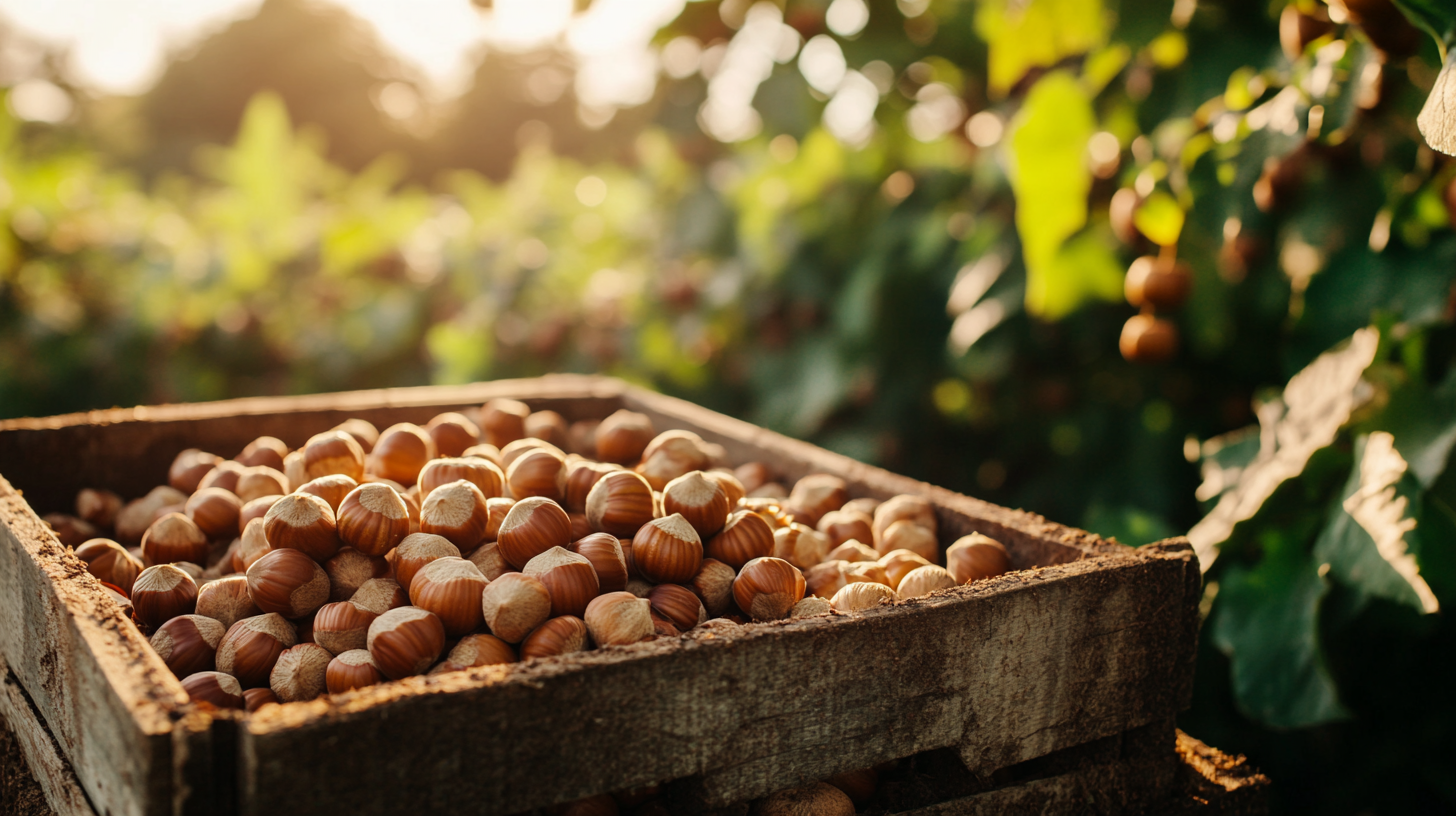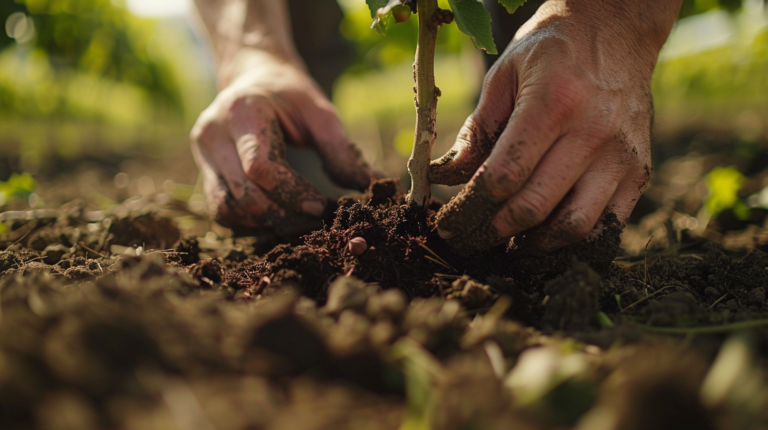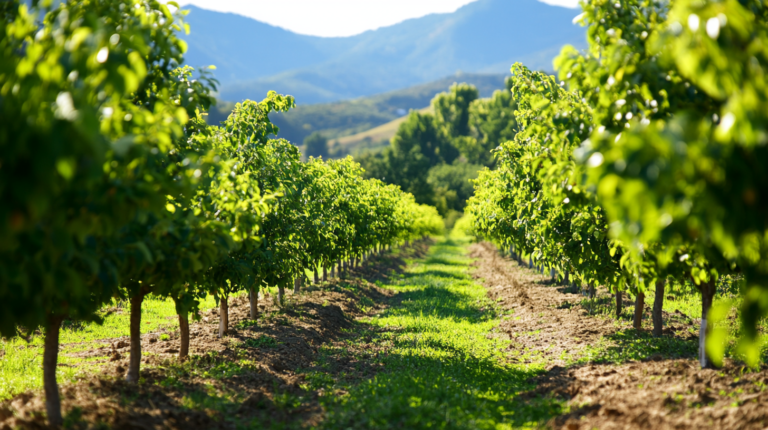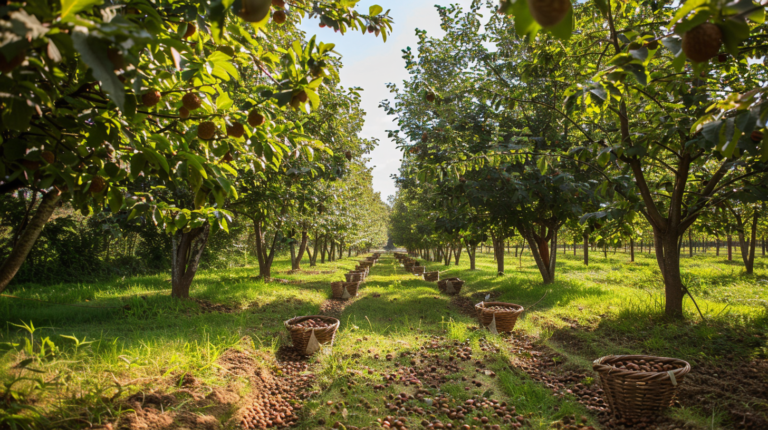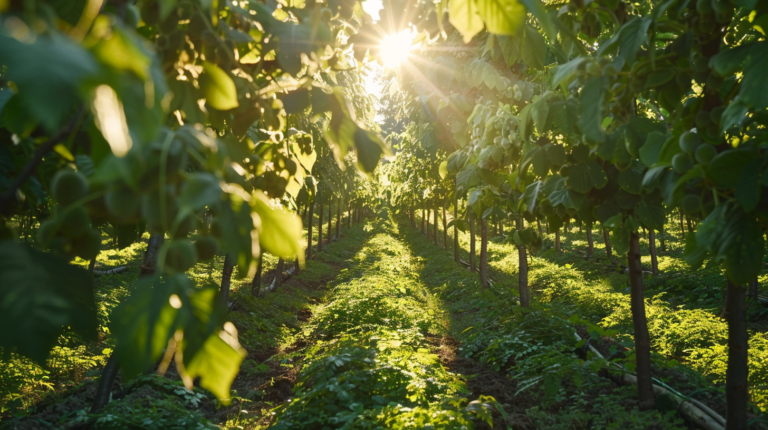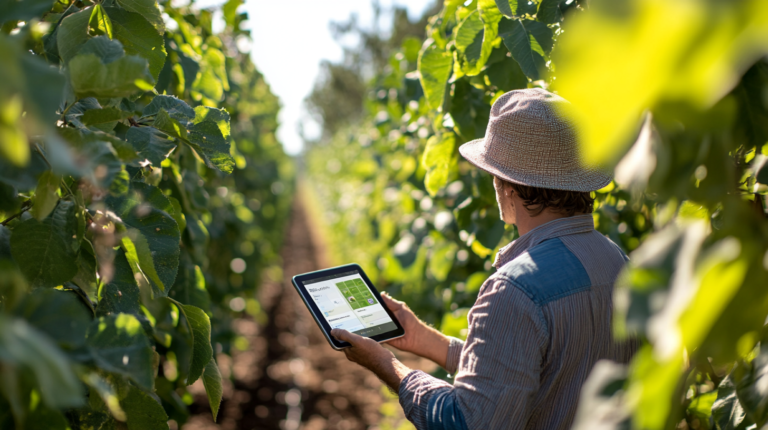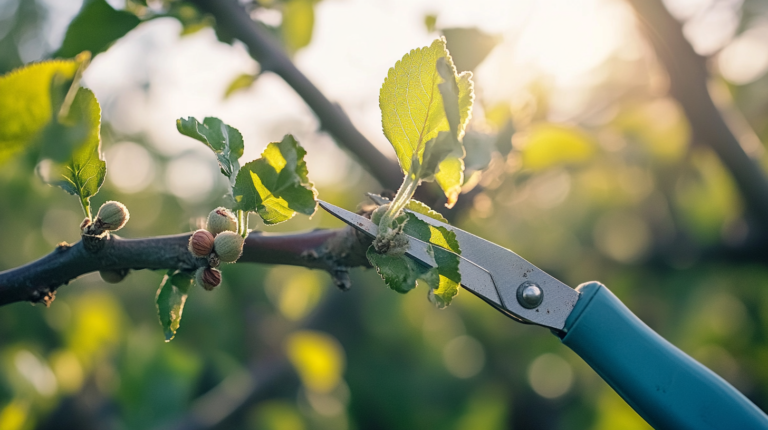Optimal Hazelnut Harvesting: Timing, Techniques, and Innovations in 2025
Hazelnuts, also known as filberts, are a delicious and nutritious nut that has gained popularity in recent years. Whether you’re a commercial grower or a home gardener, understanding the optimal timing and techniques for harvesting hazelnuts is crucial to ensure the best quality and yield. This comprehensive guide will explore the intricacies of hazelnut harvesting, from identifying the right moment to pick them to the various methods of collection and processing.
Understanding Hazelnut Growth Cycle
Before diving into the harvesting process, it’s essential to understand the growth cycle of hazelnuts. Hazelnut trees typically begin producing nuts when they are around 4 years old, but they don’t reach full productivity until they are closer to 7 years of age2. The annual cycle begins in late winter to early spring, between February and March, when clusters of blossoms appear. Once pollinated, nuts begin to form and continue to mature throughout the summer months2.
Timing the Harvest
The timing of hazelnut harvest is critical for obtaining the best quality nuts. While there may be slight variations depending on the specific location and climate, hazelnuts are generally harvested from late August to October1.
Signs of Readiness
To determine the optimal time for harvesting, look for the following signs:
- Nut color: The nuts will turn from green to brown as they mature.
- Husk appearance: The leafy husk (involucre) surrounding the nut will begin to turn brown and dry out.
- Falling nuts: Ripe hazelnuts will naturally fall from the tree or shrub1.
It’s important to note that not all nuts on a single tree or shrub will ripen at the same time. The ripening process typically occurs over a period of about six weeks2.
Early vs. Late Harvesting
While it might be tempting to wait until all nuts have fallen, there are several reasons to consider harvesting earlier:
- Pest prevention: Early harvesting can help prevent damage from squirrels, birds, and other wildlife.
- Quality control: Nuts that remain on the ground for too long may become moldy or rotten.
- Weather considerations: Harvesting before autumn rains can prevent moisture-related issues2.
Some foragers recommend checking wild hazelnuts as early as late July or early August, especially in warmer climates. Domesticated varieties may ripen slightly later, but it’s always best to start monitoring your hazelnut plants in late summer1.
Harvesting Techniques
Once you’ve determined that your hazelnuts are ready for harvest, there are several methods you can employ to collect them. The choice of method often depends on the scale of your operation and the resources available.
Ground Collection
The most common and straightforward method of harvesting hazelnuts is simply collecting them from the ground. This technique works well for both cultivated and wild hazelnuts.
- Prepare the area: Before the nuts begin to fall, mow or clear the area around the hazelnut trees or shrubs. This will make it easier to spot and collect fallen nuts2.
- Use tarps or nets: Place tarps or nets under the trees to catch falling nuts. This method can save time and effort in collection1.
- Rake and gather: Use a rake to gather fallen nuts into piles for easier collection.
- Hand-picking: For smaller harvests or wild foraging, hand-picking fallen nuts is a viable option.
Tree Shaking
To encourage nuts to fall, you can gently shake the branches of the hazelnut tree or shrub. This method is particularly useful for harvesting nuts that are ripe but haven’t fallen naturally1.
- Use a long pole or stick to gently tap branches, causing ripe nuts to fall.
- Be careful not to damage the tree or unripe nuts still on the branches.
- Collect fallen nuts immediately to prevent wildlife from getting to them first.
Cluster Picking
For wild hazelnuts or when harvesting before the nuts have fully ripened, you can pick entire clusters directly from the shrub.
- Look for clusters of nuts where the husks are beginning to turn brown.
- Gently twist the cluster to remove it from the branch1.
- This method is particularly useful when foraging, as it allows you to beat wildlife to the nuts.
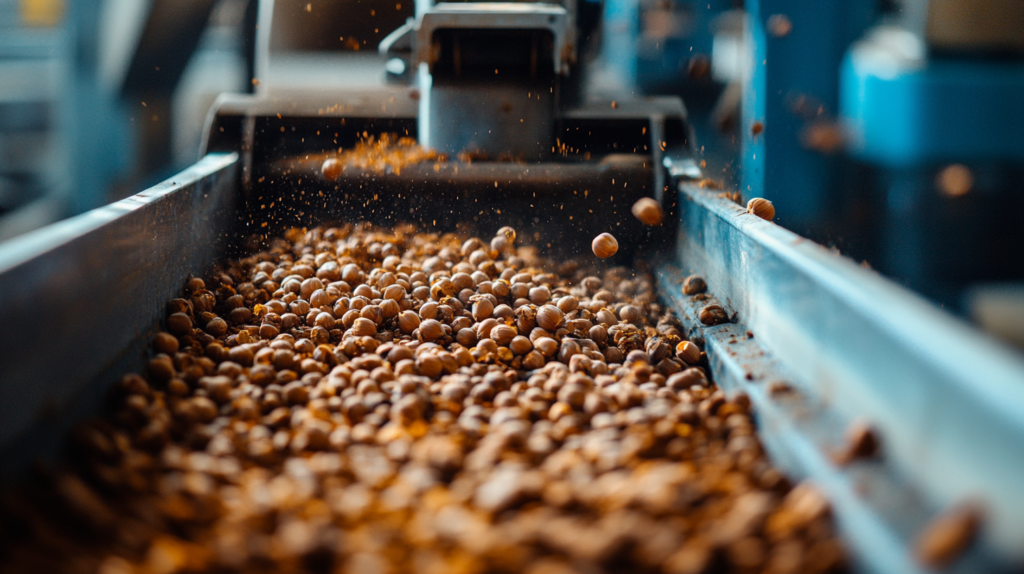
Mechanical Harvesting
For larger orchards or commercial operations, mechanical harvesting has become increasingly popular and efficient. Over the past two decades, the hazelnut industry has seen significant advancements in harvesting technology4.
Vacuum Devices
Vacuum harvesters are a popular choice for moderate-sized operations:
- These machines use powerful fans to generate an air flow that picks up nuts from the ground.
- They can collect up to 500 kg of nuts per hour.
- After suction, the nuts are cleaned, and debris is removed before the fruits fall into a container or bag3.
Self-Propelled Harvesters
For large-scale operations, self-propelled harvesters offer the highest efficiency:
- These machines use brushes to sweep nuts into the harvester.
- They typically have a working width of about two meters, allowing for rapid collection.
- Collected nuts are cleaned using augers and sieves before being transferred to a storage bunker3.
- Modern harvesters can achieve harvesting rates exceeding 1000 kg/h, a tenfold increase from early mechanization efforts4.
Post-Harvest Processing
After collection, hazelnuts require some processing to ensure the best quality and longest shelf life.
Sorting and Cleaning
- Float test: Place harvested nuts in water. Discard any that float, as these are likely empty or infested with insects2.
- Visual inspection: Remove any nuts with visible holes in the shell, as these are likely insect-infested2.
- Mechanical sorting: For larger operations, mechanical sorters can separate nuts based on size and quality.
Drying
Proper drying is crucial to prevent mold growth and ensure long-term storage:
- Spread nuts in a single layer in a well-ventilated area.
- Use fans or low heat (not exceeding 95°F or 35°C) to accelerate drying.
- Nuts are sufficiently dry when the kernels become brittle and snap easily.
Storage
Once dried, hazelnuts can be stored for extended periods:
- Store in-shell nuts in a cool, dry place in mesh bags or open containers.
- For longer storage, keep shelled nuts in airtight containers in the refrigerator or freezer.
Innovations in Hazelnut Harvesting
Recent technological advancements have not only improved harvesting efficiency but also addressed other important aspects of hazelnut production:
Precision Agriculture
Modern harvesters are being equipped with precision agriculture technologies, including:
- GPS guidance systems for more efficient field coverage
- Yield monitoring sensors to provide real-time data on harvest quantities
- Automated sorting systems to separate nuts from debris4
Quality Control
Innovations in harvesting technology have also addressed the growing market demand for higher quality hazelnuts:
- Modern harvesters are designed to minimize damage to the nuts during collection.
- New technologies, such as ENEA’s Terahertz radiation system, allow for quick identification of damaged hazelnuts and measurement of moisture content4.
Sustainability Considerations
As the hazelnut industry evolves, there is an increasing focus on sustainable practices:
- Modern harvesters are being designed with improved fuel efficiency.
- Advanced harvesting techniques are being developed to minimize soil disturbance.
- There’s ongoing development of mechanical harvesting techniques suitable for organic hazelnut production4.
Challenges and Future Directions
Despite significant advancements, several challenges remain in hazelnut harvesting:
- Orchard Adaptation: Many existing hazelnut orchards were not designed with mechanical harvesting in mind. Adapting these orchards or developing new planting systems optimized for mechanical harvesting is an ongoing process.
- Small-Scale Producers: While large-scale producers have benefited greatly from harvesting innovations, small-scale farmers may struggle with the high initial investment costs of advanced harvesting equipment.
- Climate Change Adaptation: As climate patterns shift, hazelnut harvesting technologies may need to adapt to changing growing conditions and harvest timing.
- Automation and Robotics: The future of hazelnut harvesting may lie in increased automation and the use of robotics, with ongoing research into autonomous harvesting systems4.
Conclusion
Harvesting hazelnuts at the right time and using appropriate techniques is crucial for ensuring the best quality nuts. Whether you’re a small-scale gardener or a large commercial grower, understanding the signs of nut maturity and employing the most suitable harvesting methods can significantly impact your yield and nut quality.
As the hazelnut industry continues to evolve, innovations in harvesting technology are playing a crucial role in improving efficiency, quality control, and sustainability. These advancements are not only transforming the harvesting process but also contributing to the growth of the global hazelnut market.
By staying informed about the latest harvesting techniques and technologies, hazelnut growers can optimize their operations, produce higher quality nuts, and contribute to the sustainable growth of this valuable crop. As we look to the future, the continued development of harvesting technologies will undoubtedly play a pivotal role in shaping the hazelnut industry and meeting the growing global demand for these delicious and nutritious nuts.
Sources:
[1] https://hazelnuthub.com/the-best-timing-and-techniques-for-harvesting-hazelnuts/
[2] https://www.gardeningknowhow.com/edible/nut-trees/hazelnut/when-to-harvest-hazelnuts.htm
[3] https://obsttechnik.com/en/walnut-and-apple-harvesting-equipment/technique-for-collecting-hazelnuts/
[4] https://hazelnuthub.com/hazelnut-harvesting-innovations/
[5] https://www.cardassilaris.com/news/sustainability-the-hazelnut-industry-what-is-being-done
